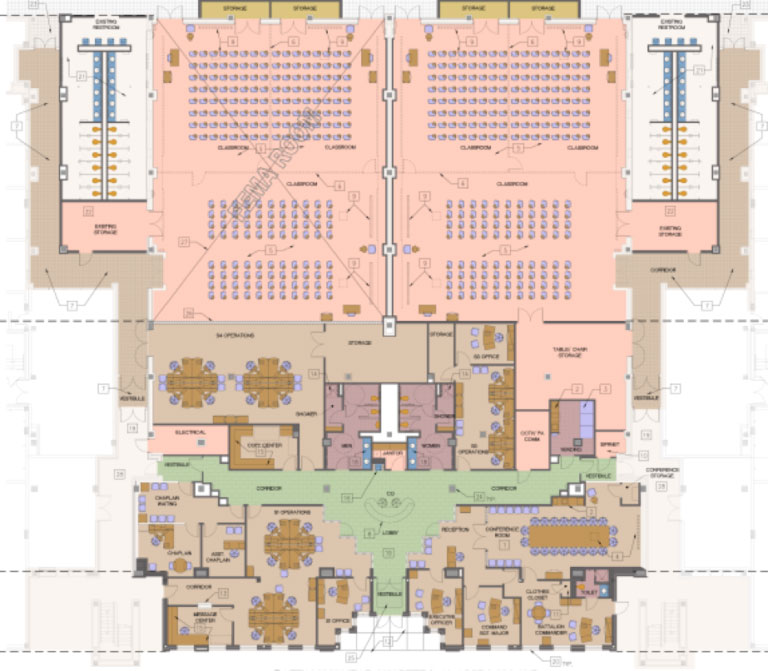Building 5955 TBUP Renovation

Contract Amount: $32,477,776
LEED Certification: Silver
Contract Duration: September 2011 – March 2013
Gross SF: 231,572
The objective of this solicitation was to provide a renovated dormitory that would have a minimum 50-year useful life. One of the highest priorities to the owners was considering the maintainability, operability, durability, sustainability, and energy consumption of the facility while developing a final design which best balanced all of those elements within the cost limitations of the contract. Careful research and cost control practices during the bidding of the project as well as thoroughly qualifying all incoming bids prior to submitting final pricing contributed to the successful award of the contract.
To increase the longevity of the remodeled facility both interior and exterior finishes were provided with mottled, flecked or speckled pat terns which helps hide soiling and reduces the look of wear and tear. In efforts to contribute to the sustainable goals of the project specific products selections focused on maximizing recycled content. Additionally, a new air barrier system was also provided which traced a continuous plane of airtightness throughout the building envelope with flexible seals at moving joints which significantly improved the efficiently of the building’s mechanical systems.
Being located in an area of the country prone to high winds and potential tornados a new FEMA Safe Room was provided within the center of the facility on the ground floor. Unique design features of this space consisted of upgraded structural components as well as wall assemblies capable of withstanding wind forces in excess of 100 MPH.
The Heating, Ventilating, and Air Conditioning (HVAC) for the facility was a Hybrid-Geothermal Heat Pump System (H-GHP) which was designed to extract solar heat stored in the upper layers of the earth to provide heat to the building, or, conversely, reject building heat to the earth (cooling the building). The designed system was successful in reducing the energy required for space heating and cooling by as much as 32% per ASHRAE 90.1 standards. Fresh air for occupant comfort was provided by dedicated outside air units. From these units the outside air passed through the Energy Recovery Ventilator (ERV) just as building exhaust leaves the building through the ERV. ERV units are 80% effective transferring energy between airflow streams; pre-warming the air under cold conditions, or precooling the outside air under warm conditions.

